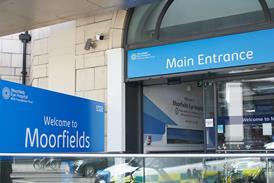The snowy white peaks of healthcare leadership are at last beginning to show significant signs of diversity.
Sponsored by
Last year, the foreword to our annual list of the most influential people in health policy and the NHS, with a global majority background, spoke of them joining “the establishment”.
This year, 26 changes in our top 50 have produced evidence that minority ethnic leaders are now dominating some areas of the health and care world.
Take the Care Quality Commission, for example, where three of the four chief inspectors now have a minority ethnic background.
Or the once fusty world of the Royal Medical Colleges. Three of which – including two of the ‘big three’ – are now led by those without white skin.
Of course, the last 12 months have seen the departures of some high-profile BAME leaders, notably NHS England workforce lead Navina Evans, but their absence has been more than made up for by the arrival of a phalanx of big hitters.
As well as some of the people referred to above, 2024-25 has seen the appointment of Meghana Pandit as NHSE’s co-national medical director and Seema Malhotra as the minister for equality and migration – a key post for a service which still relies on overseas staff much more than it should.
This is the 11th edition of HSJ’s BAME “power list” – which, now, a decade in, is beginning to live up to its colloquial name.
Figures like Lords Adebowale and Darzi now feel like permanent fixtures in the upper echelons of healthcare power. Meanwhile, trust chief executives such as Nnenna Osuji, Therese Patten, Bas Sadiq and Salma Yasmeen have joined well-known peers such as Buki Adeyemo, Jinjer Kandola, Owen Williams, Foluke Ajayi, Lorraine Sunduza and Ify Okocha (the last two once again surprisingly failing to make the BAME top 50, though not HSJ’s Top 50 CEO list) as role models for aspiring BAME leaders. There is also a sprinkling of deputy CEOs among the top 50.
This conspicuous seizing of the leadership heights by those with a minority ethnic background feels timely. National data shows that almost all the very significant growth in NHS staff since the start of the decade has been accounted for by minority ethnic workers joining the services.
The Workforce Race Equality Standard data produced this year revealed that there are now 24 trusts where more than 50 per cent of the staff are from a minority ethnic background.
However, digging deeper identifies an area where BAME leadership still has a way to go.
All but one of the trusts that draw more than half of their staff from the minority ethnic communities are in London, and they include some of the NHS’s biggest names, such as Imperial College, Barts, King’s and Guy’s and St Thomas.
However, only three of the 24 – North London Trust, Homerton, and East London – are led by someone with a minority ethnic background (Oxleas’ proportion of BAME staff is 45 per cent while North Middlesex has been taken over by the Royal Free).
There is also a noticeable dearth of black and brown faces within the top ranks of NHSE and the Department of Health and Social Care, and among rejigged integrated care boards. Let us hope that one of the upsides of the current disruption will be the government choosing to do something about that.
The 50 most influential Black, Asian and minority ethnic people in health: Full list

The top 50 most influential Black, Asian and minority ethnic leaders in English health and care – listed alphabetically
- 1
 Currently
reading
Currently
reading
NHS’s minority ethnic leaders, finally, have real power in their hands
- 3
- 4
- 5
- 6





































3 Readers' comments